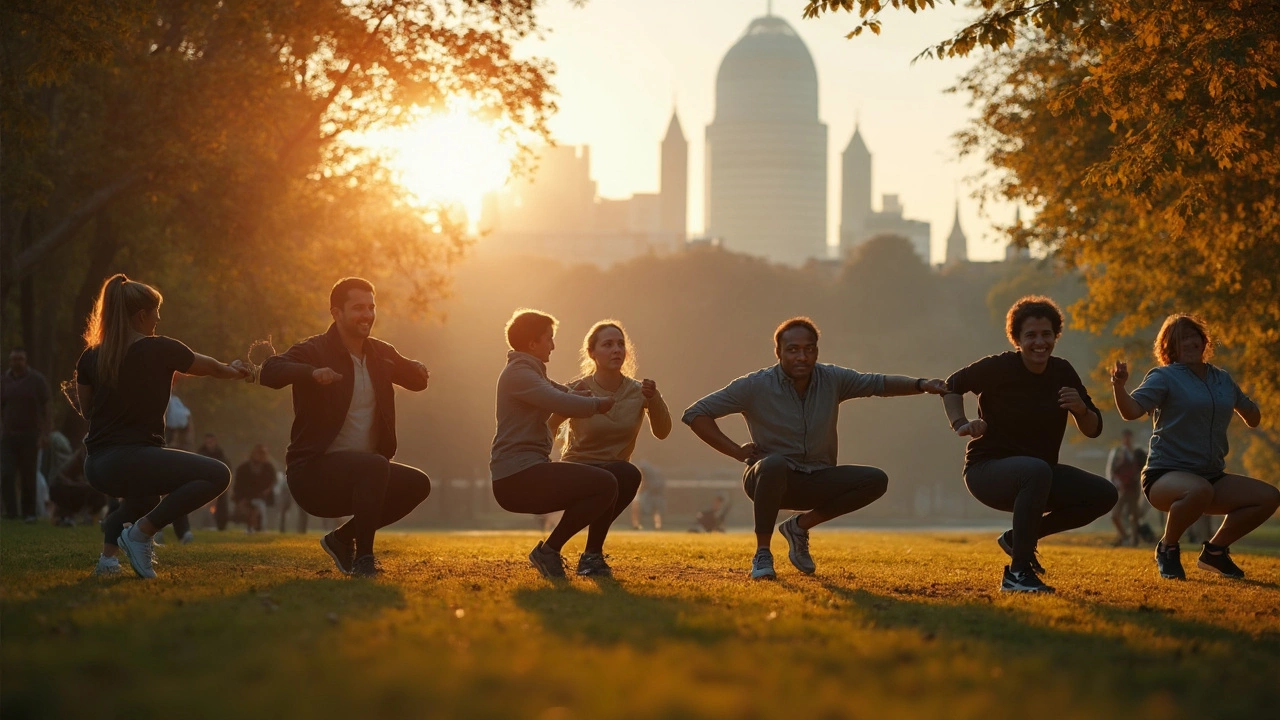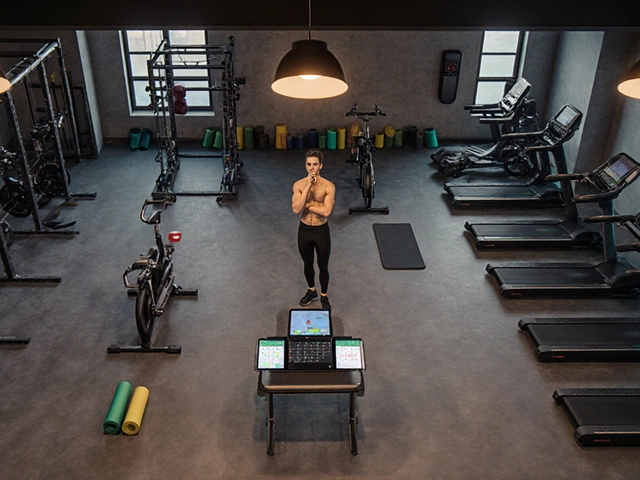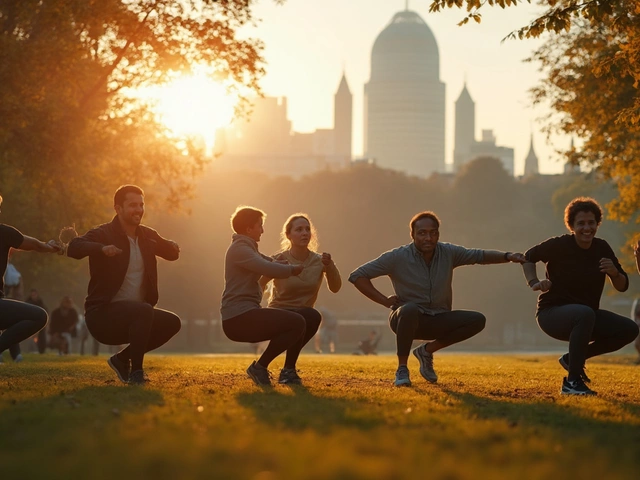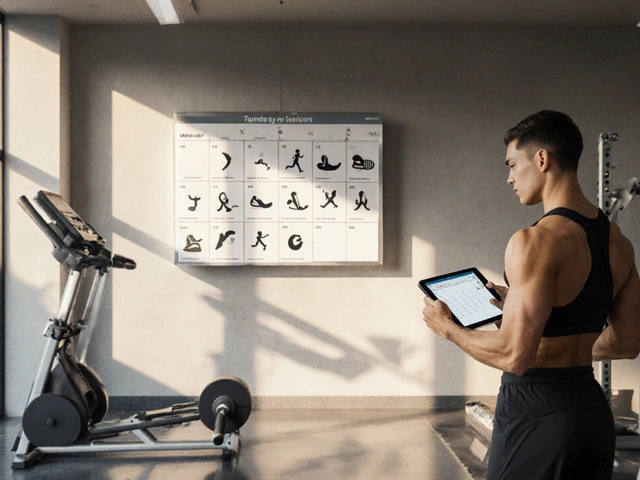If you search for "how many squats per day," you’ll get everything from 30 to 500 tossed at you. Here’s the truth: there’s no magic number that works for everyone. It depends on what you want—leaner legs, muscle, or just a stronger butt. Your age, fitness level, and whether you’re using weights matter too.
Doing 100 squats a day sounds cool, but half-repping or rushing through them isn’t going to help. It’s smarter to focus on good form and work up from a number you can manage. Beginners? Start with 15-20 squats a set. If that feels easy, add another set during the day or after each bathroom break. If you’re a gym regular, your body will need way more to get a challenge—think heavier weights, more reps, or advanced variations like split squats.
- How Many Squats Is Enough?
- Squatting for Different Goals
- Form Matters More Than Numbers
- Tips for Sticking With It
How Many Squats Is Enough?
Let’s get straight to the point. There’s no universal answer, but there are some numbers that can help you figure it out. If you’re just starting out, most trainers recommend aiming for 2-3 sets of 15-20 bodyweight squats a day. If that feels easy, bump it up to 30-50 a day, but don’t rush the reps—good form always trumps big numbers.
If you want to see real muscle growth, you’ll want to add resistance or weights. Research from the American Council on Exercise found that muscle gains happen fastest when you mix up your rep ranges and add weight as you get stronger. There’s a big difference between cranking out 50 bodyweight squats and struggling through 3 sets of 8 heavy reps with a barbell on your back.
Here’s a quick breakdown to help you get started:
| Experience Level | Daily Reps (Bodyweight) | Weekly Frequency |
|---|---|---|
| Beginner | 30-40 | 3-5 days |
| Intermediate | 50-100 | 3-5 days |
| Advanced (with weights) | 24-36 (added weight) | 2-4 days |
Remember, your body needs rest, especially if you get sore or start using weights. Quality matters way more than pumping out endless squats with sloppy form. If your legs are fried, ease up—you’re not skipping progress by resting.
- If you’re aiming for fat loss, mix squats into a larger routine with cardio and other bodyweight moves.
- If strong legs or a solid butt are your main focus, put more energy into fewer, slow and controlled reps, focusing on muscle squeeze.
Think long-term. Consistency beats heroics—doing the squats you can handle every day adds up to way better results than going all out once in a while and burning out.
Squatting for Different Goals
Straight up: the answer to how many squats per day changes completely depending on what you want to achieve. There’s a big difference between building muscle, boosting endurance, or trying to tone up your legs and glutes. Let’s break it down with numbers and real benefits.
If your goal is to build muscle (that’s called hypertrophy), research shows you want to do between 6 and 12 reps per set, with three to five sets, and use a weight that feels pretty tough by the last few reps. So, you might be squatting 30-60 times in a workout, but with actual resistance—like a barbell, dumbbells, or kettlebell. Rest at least 60 seconds between sets, so you can keep your form tight.
Trying to get lean or burn fat? The trick is higher reps and shorter rest to keep your heart rate up. Bodyweight squats work if you go for 15-25 reps per set, repeating for three to six sets. That could mean you’re cranking out 75-150 squats in a session. You can mix things up by adding jump squats or split squats to keep your muscles guessing (and the burn real).
For pure strength, numbers drop but intensity goes way up. You’ll see lifters do heavy squats, usually 3-5 reps per set—sometimes even just one rep—over three to five sets, with long rests (two to five minutes) between sets. If you’re going this route, you need good technique and usually a spotter. That’s where most people use heavy weights and train just two or three times a week.
Want to improve your squats for general health? Consistency beats big numbers every time. Studies show that doing moderate reps most days of the week (think 20-30 squats per day) builds joint health and boosts metabolism without tiring you out or risking knee pain. You don’t even need fancy gym gear to get results.
If you’re just starting, don’t panic—every body is different. Take a few weeks, try the numbers above, and adjust based on how your knees, hips, and lower back feel. Sometimes, just adding in a few squats every day (on top of walks, runs, or gym sessions) is enough to see big daily life changes—like less knee popping or fewer trips to the couch after climbing stairs.

Form Matters More Than Numbers
People get caught up in chasing big squat counts, but messing up your form wipes out the benefits and bumps up your risk of injury. It’s way better to nail 15 squats with good technique than crank out 50 sloppy ones. Your knees and back will thank you, trust me.
What does good form even mean? Start by planting your feet shoulder-width apart. Drop your hips back and down, like you’re sitting onto a chair. Keep your chest up and eyes forward—not at your feet. Don’t let your knees cave in or drift out past your toes. Each rep should be smooth and controlled, not rushed.
If you're lifting weights, the same form rules apply—don’t add more plates until you can squat with solid technique at your current weight. According to the American Council on Exercise, squats can activate major muscle groups like your quads, hamstrings, glutes, and even your core, but only when your form is dialed in.
- Slow down: A squat should take at least two seconds down, two seconds up.
- Go low enough: Ideally, your thighs are parallel to the ground at the bottom. If that’s tough at first, go as low as you can without pain and work on mobility.
- Check your knees: They should point in the same direction as your toes and never cave in.
- Engage your core: Keeping your abs tight protects your lower back.
If you want to see progress (and avoid a trip to the physio), it's a smart swap to focus on squats done right before bumping up your daily count. Not convinced? Here’s a quick comparison from a University of Waterloo biomechanics study:
| Squat Type | Muscle Activation | Injury Risk |
|---|---|---|
| Good form | High | Low |
| Poor form (knees caving in) | Low to moderate | High (knee/lower back) |
So, before aiming for a massive rep count, get that form locked in. If you're unsure, ask someone at the gym, or film yourself and check against a tutorial—sometimes you don’t know until you actually see it. Consistency plus good form always beats big numbers with bad form.
Tips for Sticking With It
Staying consistent with squats can be tough—motivation fades, life gets busy, and sometimes your legs are just not in the mood. Here’s what actually works if you want to make daily squats part of your routine instead of just a one-week wonder.
- Set a time and place: Squats after brushing your teeth? Before dinner? Right after work? Attach them to something you already do every day, and you’ll start turning it into a habit.
- Get a partner. When I roped Lara in to squat with me, we both stuck with it way longer. Some days, I finished just because I didn’t want to lose our little scoreboard challenge.
- Track your numbers. Whether it’s an old-school wall calendar or a fitness app, marking off sets feels good. It also helps you see progress when you’re having a "blah" day.
- Mix it up. Regular bodyweight squats get boring. Try goblet squats, jump squats, or split squats to keep things interesting and your muscles guessing.
- Celebrate milestones. Did your jeans start feeling looser? Made it through 30 days straight? Treat yourself—buy those new earbuds or enjoy a movie night.
And if you’re curious about what keeps people going, check out this table summarizing results from a 2024 survey on workout habits among regular gym-goers:
| Habit | Boost in Consistency (%) |
|---|---|
| Tracking progress | 54 |
| Workout partner/accountability | 41 |
| Changing routine weekly | 35 |
| Setting short-term rewards | 32 |
No need to be perfect. Missing a day doesn’t ruin anything—just pick up where you left off. Small wins add up, and before you know it, squats will feel as normal as brushing your teeth.







